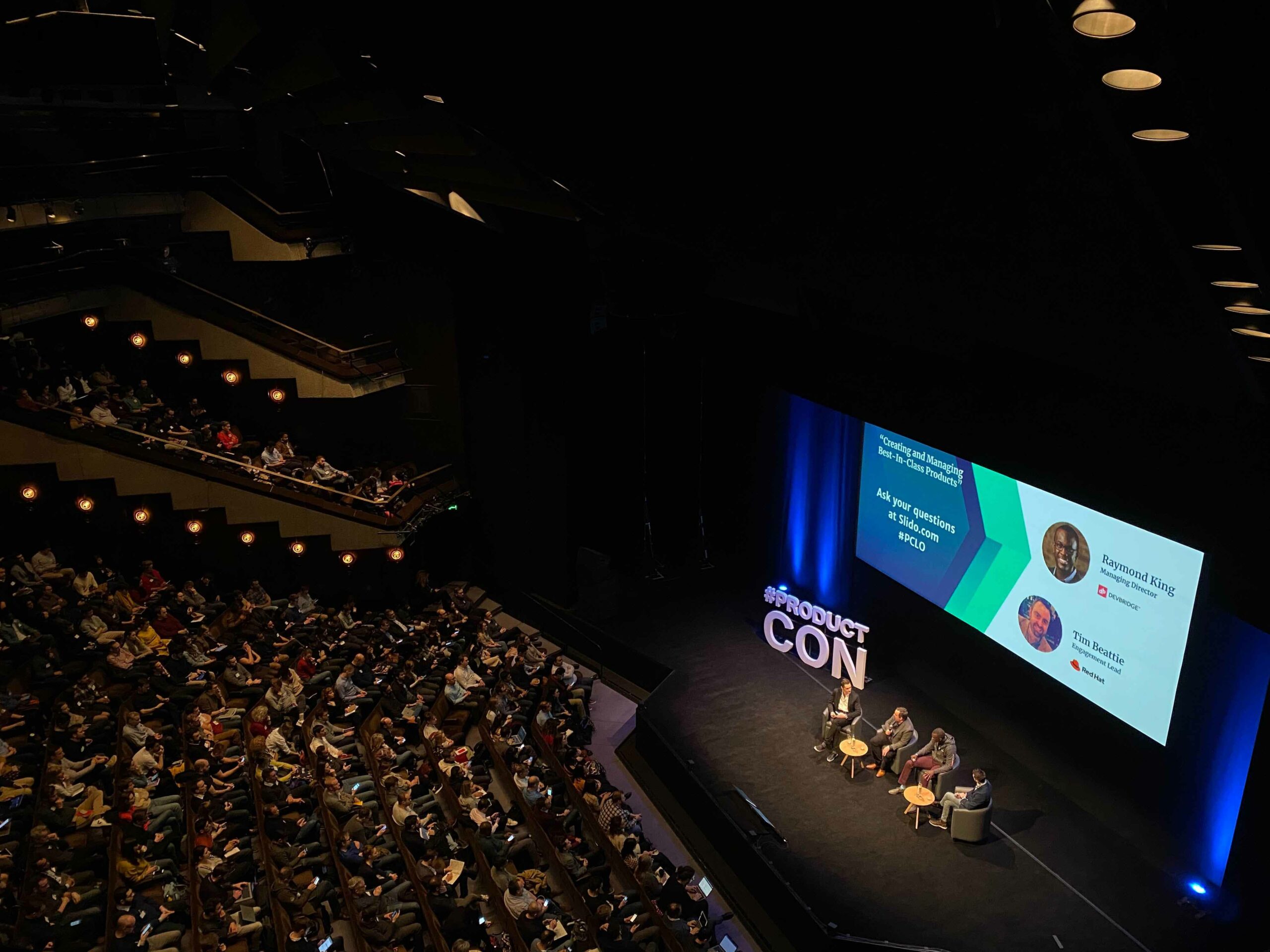Photo by Hitesh Choudhary
An overwhelming majority of companies now offer employee professional development (PD) stipend programs – including 88% of tech companies who participated in a recent OneRange survey.
These employee-directed development programs put the power of choice in the hands of employees who know best what types of training and upskilling they want and need. Workers participating in these programs feel trusted and valued – after all, who doesn’t love freedom in how they learn?!
But choice can be a challenge, too, especially with a seemingly limitless universe of options. The average continuous education stipend (also called a professional development investment or PDI) is $2,500 per year, which some workers find difficult to spend. In fact, our research indicates that up to 90% of PDI budgets go unspent, largely because workers experience decision paralysis and struggle to choose a professional development or upskilling program.
Don’t let your continuous education stipend go to waste! Don’t know where to get started?
Here are ten ways to use your employee PDI.
1. Conferences and industry events
Whether you’re in medicine, marketing, or manufacturing, nearly every industry has professional associations. These organizations often host an annual meeting and other smaller, local events. These events can be great opportunities to build your network, stay current with the latest research and thought leadership, and advance your skills; many even offer workshops and certifications.
The key is to focus on conferences where the emphasis is on professional development and learning vs. generating revenue. There are plenty of tradeshows that can be funded by an event or T&E budget – and which probably don’t allow much time for professional development if you’re focused on meeting a quota or sales target.
Spend your continuous education budget on the professional association events and technology user groups that will be most personally and professionally meaningful. And if they happen to be in an amazing location, we won’t hold it against you. Some of the most popular tech conferences include SXSW (Austin), CES (Las Vegas), and Web Summit (Lisbon).
Since the era of the pandemic, we have also witnessed an explosion of virtual conferences and events. While these will never replace the experience of an in-person gathering, they are likely to remain for the future as a valuable extension of live conferences, and could expand significantly as the metaverse gains traction. Virtual events may be a worthwhile, more affordable way to get legs out of your professional development (PD) budget if you can’t travel or have other restrictions.
Industry conferences typically range in price from $100 – $250 for virtual events to $500 for short conferences and non-profit events to $2,500 for multi-day technology conferences. Workshops and certifications are generally an additional cost on top of the main conference registration.

2. Microcredentials, nanodegrees, and certifications
Microcredentials are digital certifications that verify an individual’s competence in a specific skill or set of skills. They were developed as a way for career professionals to evolve their skills and demonstrate areas of expertise without having to earn additional degrees.
A key component of microcredentials is that they are competency-based, meaning you have to demonstrate proficiency in a skill to gain a credential – you can’t just complete coursework. The credentials are awarded in the form of a digital badge that can be displayed on your LinkedIn account or other professional profile.
Microdentials started in computer programming as a form of technology certification and have been adopted by a number of other professions, including teaching / education. Examples of some different microcredentials include (source: study.com):
- Teaching Creative Problem Solving: Develop the skills required for teaching others how to creatively solve complex problems individually and in groups.
- Android Development: Learn the skills necessary to begin building apps for the Android operating system.
- Making Strategic Decisions: Learn how to carry through with key business strategies through effective decision making, deliberation, and delegation.
Today, leading organizations offer marketplaces of microcredentials and provide a level of standardization and quality control, including Credly, Digital Promise, and Bloomboard.
You can also find certifications and nanodegrees for specific professional competencies, such as Project Management (CAPM, PMP), career coaching (ICF, iPEC), and software programs. Nanodegrees – a term coined by Udacity, the digital education company founded by Stanford professors Sebastian Thrun and Peter Norvig – are professional certifications that are typically offered by traditional and online institutions of education, as well as professional associations. Many leading tech companies now offer certifications for people already employed or seeking careers that require use of their technology, such as Google UX Design, Demandbase Account-based Marketing, IBM Data Engineering, AWS Cloud Practitioner, Intuit Bookkeeping, and many more.
The cost for microcredentials is typically $100 – 1,000, while the cost for nanodegrees and technology certifications ranges from $1,000 – $5,000, depending on the skill and amount of study required to master it.
3. Tech bootcamps
Tech bootcamps have exploded in recent years. The most well-known are coding bootcamps, which offer aspiring developers crash courses in specific coding languages (e.g., Javascript, Python), systems (e.g., apps for iOS or Android), and skills (e.g., front-end development, back-end development).
Bootcamps are a practical alternative to more lengthy, expensive, and theoretical 2-year or 4-year computer science / engineering degrees, and provide more structure and support than the self-taught approach. They also typically have strong relationships with technology employers and job placement programs, making them ideal for career switchers. Many even guarantee that you will find a job after completing the program.
Bootcamps can vary in length from a few weeks to a few months, but the key differentiator is that they are intensive. Bootcamps usually cover an accelerated curriculum, meaning that they take material that might typically be completed over a semester or a year and compress it into a couple of months or weeks. They are more comprehensive in scope than microcredentials, and generally more expensive and time-consuming to complete – many are designed as full-time, all-day programs.
While coding bootcamps are the most popular, in recent years bootcamps have expanded to include a wide range of digital specialties like UI and UX design, digital marketing, digital analytics, and more. Examples of well-known bootcamps are Full Stack Academy and General Assembly, and an increasing number of universities and tech companies now offer their own bootcamps, as well.
Prices for bootcamps range from $5,000 – $20,000 depending on length and area of specialization.

4. Career Coaching
Career coaching is the practice of working with a trained professional to develop specific skills and achieve specific career goals. Skills can include hard, job-related skills and soft skills like managing teams.
Historically, coaching was usually restricted to high-level executives (“executive coaching”) and occasionally made available to entry-level job seekers (“career coaching”). Today, coaching is becoming more accessible to everyone at every stage in their career.
The best coaching is one-on-one, highly personalized, fully confidential – and truly transformational. Coaching engagements can last anywhere from a couple months to a few years depending on your goals. See if your company has a partnership with a coaching service, and look for coaches with certifications from trusted coaching organizations like ICF and iPEC. Or, search for coaches yourself on platforms like BetterUp, GoCoach, Bravely, and Placement.
Career coaching ranges from $100 – $500 per session. Plan to invest in a minimum of 6-8 sessions to see an impact.
5. Language study
In an interconnected global economy, language skills are increasingly in demand. There are more ways than ever to learn a language, whether you’re just looking to develop basic skills so you can “get by” when traveling abroad, or true conversational fluency.
A growing number of apps such as Duolingo, Babbel, and Rosetta Stone offer premium subscriptions with features like conversational practice that go beyond the free versions. The beauty of these apps is that you can squeeze in practice any time you have your smartphone and fifteen minutes free.
Other options include traditional courses (in-person or online) or one-on-one tutoring with a native speaker. For more accelerated study, check out intensives offered by providers like Berlitz and in-country immersion programs. You can also find programs with an emphasis in key areas like business, medicine, or travel.
Language study programs range in price from $5/month for premium apps to $2,000 for in-person intensive programs.
6. Online courses
Online course is a blanket term that covers a range of programs of varying lengths, formats, and price points. Online courses gained popularity with the explosion of MOOCs – or massive open online courses offered for free to learners around the world – in the early aughts, and today are offered at a range of price points on well-known platforms like Coursera, Udemy, FutureLearn, and MasterClass.
It’s important to note that quality online courses are specifically and intentionally designed to be delivered in a digital format and include elements like high-quality streaming video and discussion boards. Fully online courses are distinct from blended learning or hybrid courses that include some online and in-person components, and from remote courses – the in-person courses that shifted online due to emergency circumstances during the pandemic.
Online courses range in price from about $50 – $1,500 for non-degree programs.
7. Executive education
Executive education refers to courses designed for working managers and executives – or those who aspire to one of these roles. These programs are typically offered by business schools and universities through executive education, continuing education, professional education, or extension schools.
While many are familiar with executive MBA programs, the most common executive education programs are narrower in scope and offer a certificate instead of a degree upon completion. These programs usually focus on specific skill sets such as organizational design, negotiations, or budget management. You can also find programs designed for specific industries like IT and non-profit.
Executive education courses are a great way to get many of the benefits of a prestigious degree program – including a credential from a worldclass university and the opportunity to network with a group of peer professionals – for a fraction of the price and time investment.
Because they are designed for working professionals, most executive education courses are held on nights and weekends and last for spans of a few weeks to a few months. Examples of well-known executive education programs are Emeritus.org, Harvard Extension School, the Brookings Institution and the Center for Creative Leadership.
Executive education ranges from $1,000 – $5,000 for most non-degree programs.
8. Seminars and workshops
Similar to conferences, these are usually industry- or role-specific. But, instead of being broad in focus, they are deliberately more narrow. For example, a seminar might feature an expert in your field leading a training on a specific subject offered just to executives. Because seminars tend to be more specialized, hands-on, and interactive, they are usually smaller in size and capped at a specific number of seats. The value is learning directly from an expert and having intimate interactions or co-learning (collaborative learning) experiences with peers. An example of a business-focused seminar program is Brunchwork.
The cost for expert-led seminars ranges from about $250 – $2,500 depending on length, topic, and level of expertise.
9. Books, subscriptions, and resources
Books, audiobooks, subscriptions to professional publications, podcasts, videos, and other career-focused resources can be a great way to spend your professional development dollars, especially if you don’t have a big budget or a lot of time, or are looking for a supplement to get the maximum value out of your annual PDI allocation.
Some popular business books include Getting to Yes, Start With Why, Lean In, Deep Work, Radical Candor, Creativity, Inc., and Traction. You can also find books to learn any number of skills from coding to time management to meditation.
Many leading business journals and professional associations also produce weekly, monthly, or quarterly publications that are offered as part of an annual membership fee or as a separate subscription. Examples include Harvard Business Review, Forbes, Tech Crunch, Ad Week, and the Chronicle of Higher Education.
And finally, another out-of-the-box option to consider is subscriptions to exclusive content. An increasing number of podcasts offer premium memberships that enable access to an expanded range of content, such as PushNik and Patreon. Audible and Kindle subscriptions are another popular way to enjoy audiobooks, digital books, and podcasts.
Books typically range from $5 – $15 for digital copies to $50 for more expensive hardcover books. Subscriptions for audiobooks, podcasts, and professional publications range from $25 – $250 for an annual subscription.
10. Meetups and networking events
If you live in a major city, there is probably no shortage of meetups, networking events, affinity groups, panel discussions, book readings, etc. These activities, often billed as “happy hours” and hosted immediately following the end of the work day, are usually free, but occasionally have a small fee if there’s an in-depth series, a high-profile speaker, heavy hors d’oeuvres, etc. These could be a good option for using your professional development investment. And we won’t blame you if you indulge in a few cocktails while you’re learning. Find meetups through local vendors, hyperlocal media organizations like DCist, Gothamist, and Patch, and platforms like Meetup.com and Nextdoor.
The price for networking events and professional meetups typically ranges from $20 – $50.

Bonus exercise: Questions to consider before choosing a professional development program
So there you have it! We’ve just given you ten unique ideas for ways to spend your continuous education stipend. If you’re still feeling overwhelmed by the options, take a few minutes to consider what types of skills or experiences you’re looking to attain, and what types of delivery formats work with your schedule and learning style.
Al Dea, learning and development expert and founder of Betterwork Labs, says the most important question to ask yourself is what problem — or professional challenge — you want to solve with your PDI. Are you looking to improve at your current role? Uplevel to a higher position? Enhance your brand and credibility?
The questions below should help you better understand what you’re looking for so you can start to narrow down your options. For a complete list of questions and a comprehensive self-assessment, check out our blog post authored in partnership with Dea.
Key Questions
How much time do you have available for professional development?
Can you commit to activities like regular coaching or in-depth classes and get the full value out of it? Or do you need something more bite-sized?
What kinds of skills would you like to develop?
Are you seeking to develop hard, technical skills like coding or language proficiency? Or are you looking to build soft skills like negotiating contracts and managing teams?
What kind of documentation do you need?
Does it matter if you get a credential, certificate, or other formal acknowledgement of your training when you complete a program?
How do you learn best?
Would you prefer an in-person experience or online experience?
We hope this article has given you some new ideas for what to do with your annual professional development stipend. The most important thing is to get out there and take advantage of the opportunity to invest in yourself and your career growth. Happy learning!






